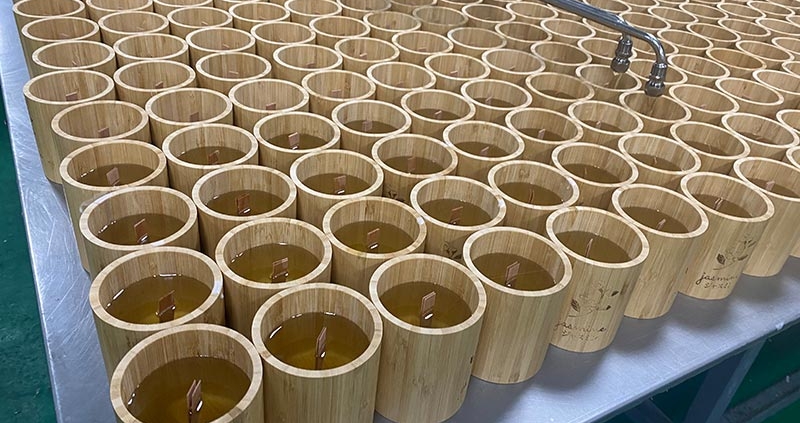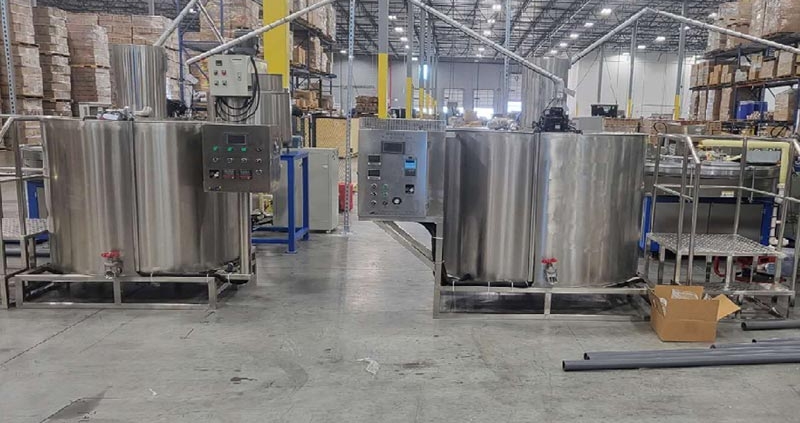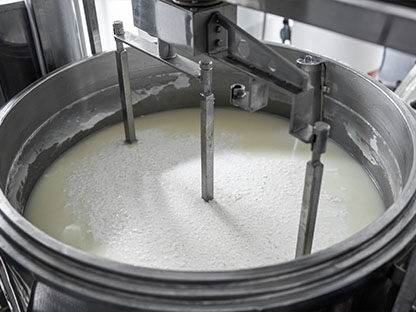The art of candle making has evolved significantly, with modern technology now playing a crucial role in ensuring efficiency, precision, and superior quality. Yide Machinery has revolutionized the industry with its state-of-the-art candle filling equipment, allowing manufacturers to produce premium scented candles with unmatched consistency and efficiency.
The Candle Making Process with Yide’s Equipment
A well-crafted candle starts with meticulous preparation and precision. In Yide’s advanced candle manufacturing process, the wood wick is securely attached, ensuring a stable and even burn. Once the wick is properly positioned, liquid wax is poured into jars with high efficiency, thanks to Yide’s advanced automated filling technology.
By utilizing precision temperature control and automated pouring mechanisms, Yide’s machinery guarantees that each jar is filled with exactly the right amount of wax, minimizing waste while maintaining product consistency.
Cutting-Edge Technology for Superior Candle Production
Yide’s candle-making equipment is designed to streamline production without compromising quality. The precision-engineered filling system ensures that:
- Wax is evenly distributed, preventing air bubbles and ensuring a smooth surface.
- The fragrance is well-preserved, enhancing scent diffusion for a luxurious aroma.
- The wax burns consistently, extending the candle’s lifespan and improving user experience.
By leveraging automation and precision, Yide candle machines significantly increase production efficiency, enabling manufacturers to scale operations while maintaining high-quality standards.
Boosting Productivity & Reducing Costs
One of the biggest challenges in candle production is balancing efficiency with craftsmanship. Yide’s solutions help manufacturers:
- Improve production speed through high-efficiency automated filling and wick-centering systems.
- Reduce labor costs by minimizing manual processes and maximizing automation.
- Ensure consistent quality with precision pouring and temperature control, eliminating errors.
For businesses looking to expand their luxury candle production, Yide’s equipment offers a cost-effective and scalable solution to meet increasing market demands.
Supporting the Growing Market for Premium Candles
The demand for luxury and artisanal candles continues to grow, with consumers seeking high-end, long-lasting fragrances for their homes. Yide Machinery provides manufacturers with the tools they need to keep up with this demand, delivering high-quality, premium candles that stand out in the market.
With a strong reputation for reliability, innovation, and efficiency, Yide has become a trusted partner for candle manufacturers worldwide. Whether producing small-batch artisanal candles or large-scale commercial orders, Yide’s advanced filling equipment ensures a seamless production process with exceptional results.






